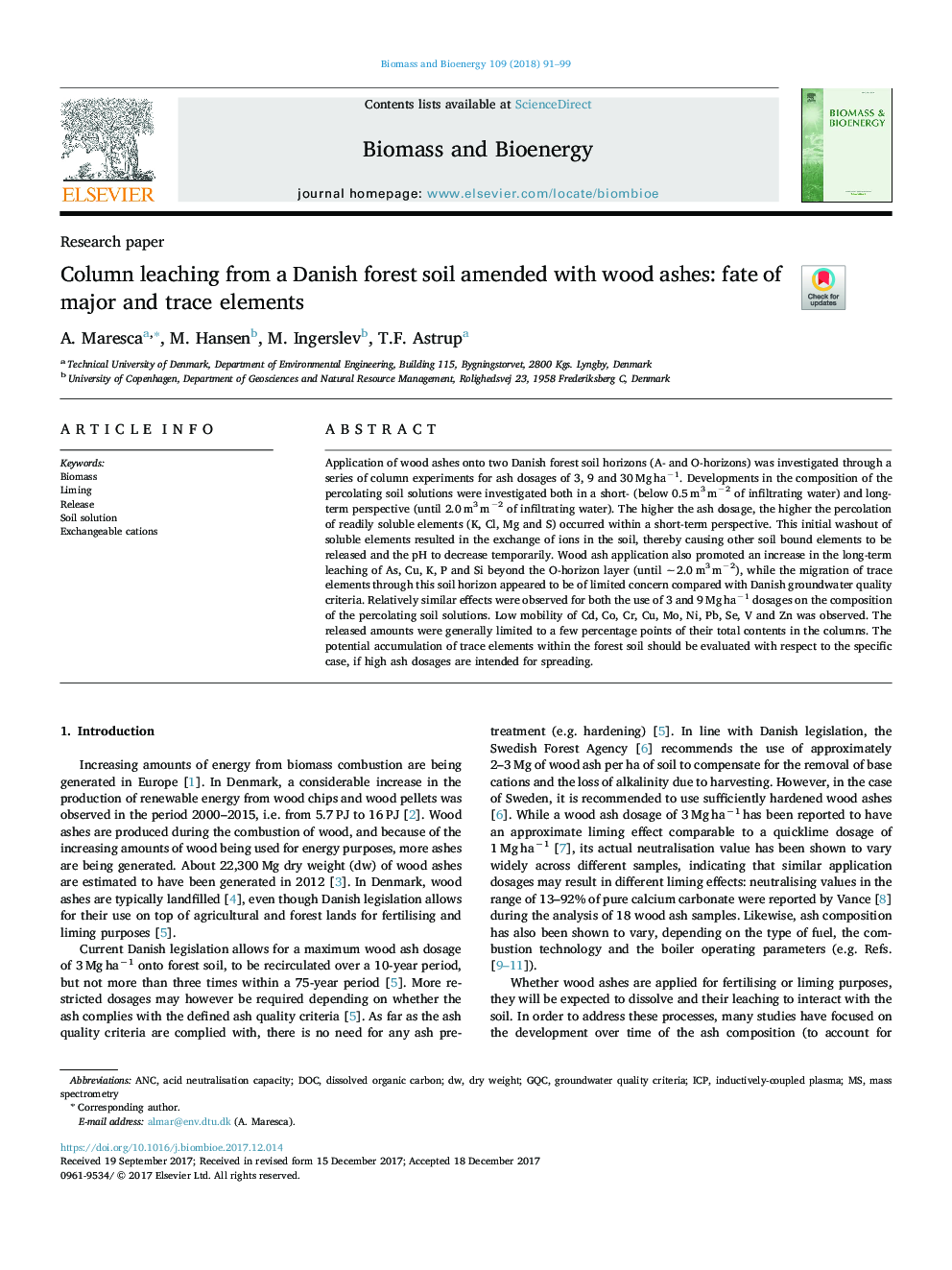| Article ID | Journal | Published Year | Pages | File Type |
|---|---|---|---|---|
| 7063018 | Biomass and Bioenergy | 2018 | 9 Pages |
Abstract
Application of wood ashes onto two Danish forest soil horizons (A- and O-horizons) was investigated through a series of column experiments for ash dosages of 3, 9 and 30â¯Mgâ¯haâ1. Developments in the composition of the percolating soil solutions were investigated both in a short- (below 0.5â¯m3â¯mâ2 of infiltrating water) and long-term perspective (until 2.0â¯m3â¯mâ2 of infiltrating water). The higher the ash dosage, the higher the percolation of readily soluble elements (K, Cl, Mg and S) occurred within a short-term perspective. This initial washout of soluble elements resulted in the exchange of ions in the soil, thereby causing other soil bound elements to be released and the pH to decrease temporarily. Wood ash application also promoted an increase in the long-term leaching of As, Cu, K, P and Si beyond the O-horizon layer (until â¼2.0â¯m3â¯mâ2), while the migration of trace elements through this soil horizon appeared to be of limited concern compared with Danish groundwater quality criteria. Relatively similar effects were observed for both the use of 3 and 9â¯Mgâ¯haâ1 dosages on the composition of the percolating soil solutions. Low mobility of Cd, Co, Cr, Cu, Mo, Ni, Pb, Se, V and Zn was observed. The released amounts were generally limited to a few percentage points of their total contents in the columns. The potential accumulation of trace elements within the forest soil should be evaluated with respect to the specific case, if high ash dosages are intended for spreading.
Keywords
Related Topics
Physical Sciences and Engineering
Chemical Engineering
Process Chemistry and Technology
Authors
A. Maresca, M. Hansen, M. Ingerslev, T.F. Astrup,
